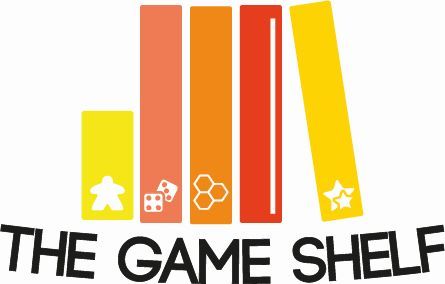Game Title:
The Witches
Designer: Martin
Wallace
Manufacturer:
Treefrog Games
Year: 2013
Amy is a big Terry
Pratchett fan. We have more than a full bookshelf full of his books, even
though this space is getting slowly squeezed by the board game collection. So
for Christmas 2014 (when I game collection didn’t even have its own shelf!) Amy
was given a signed copy of the deluxe edition of The Witches board game.
In The Witches
each player takes on the role of a trainee witch who must travel round the land
of Lancre and fix various problems. The problems range in difficulty from a Broken
Leg and Death (on green tiles) through to the harder purple tiles which depict
invasions from evil Elves or other miscreants. The witch who has had the best
training at the end of the game is the winner, however the witches should also
be mindful that they can all lose the game if the town becomes overrun by Elves
or is despairing at the amount of Crisis on the board.
On each player’s turn they will first draw a game card from
the top of the deck and a new Problem tile will spawn on the corresponding
location on the board. If there is already a problem tile in this location,
then a Crisis counter is placed which increases the current tile’s difficulty
by 2. Cards are drawn until a vacant location is found for the new problem
tile. The player may then move their witch up to 2 spaces, although the witch
must stop if they encounter another witch or a problem tile.
When you encounter a problem tile you must try to solve the
problem. (In the case of a Hard Problem you must also flip and reveal the purple
tile). You solve a problem by rolling a total on 4 dice greater than or equal
to the number on that problem. You roll two dice first and can use any cards in
your hand to modify the result. You then roll a further 2 dice. Each dice have
potential results of 2-6 and the sixth side is a Cackle which is worth no
points, but gives you a Cackle counter. If you succeed you obtain the tile on
your player board. If you fail against a green tile, nothing happens, but if
you fail against a purple tile there are negative effects, unless you choose to
run away after you roll the first 2 dice. In one turn you then get the option to
move again, and potentially solve another problem before it is the next player’s
turn.
By solving problems and placing them on your player board,
you are not only building up victory points, but you are also building up your
character to be able to solve harder problems. Collecting the green, Easy
Problem tiles increases your hand size so there are more special cards you can
throw in to boost your dice rolls. Collecting purple, Hard Problem tiles build
up +1s to your rolls against further problem tiles.
 |
| By building up 6 easy problem tiles, Tiffany Aching's hand size is now 6 cards and with 3 hard problem tiles, she has +1 to any rolls against further problem tiles. |
At first we played the game a number of times and enjoyed
it. However, as our tastes have matured in the hobby, this game very quickly
lost its shine. For me the final nail in the coffin came in a 4-player game
with 3 new players where the amount of down time was tedious and I don’t think
anyone got a lot of enjoyment from the game. Playing The Witches is pretty much a solitaire experience. The only player
interaction comes from ‘Having Tea’ which occurs when you cross paths with
other players on the board, but this is more of a coincidence than something to
be either avoided or encouraged. The very small semi-cooperative nature of the
game can also often easily be overlooked because the likelihood of the ‘Crisis’
tokens all being used is often low.
For a Discworld
fan, perhaps the references make this game worthwhile, but for me, the game
pretty much plays itself. Most movement decisions are obvious, it tends to be
pretty obvious when to push your luck with the dice and the winner is the
player who gets most lucky with their dice and card draw. I don’t think there
is anything inherently broken about the game it just doesn’t have much fun
factor and so it gets a 5/10.



No comments:
Post a Comment